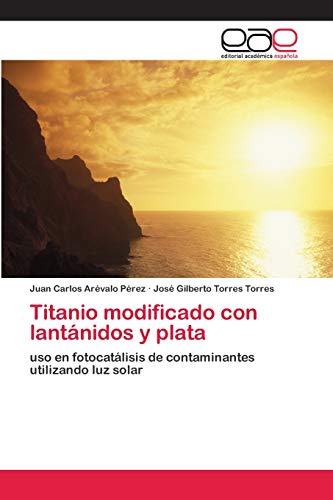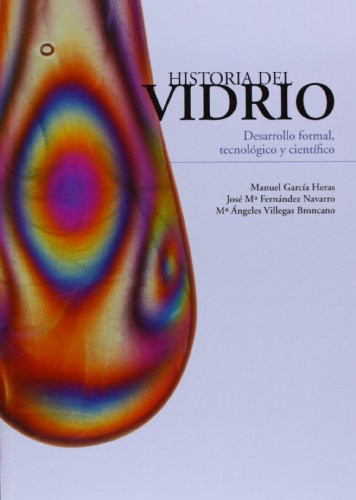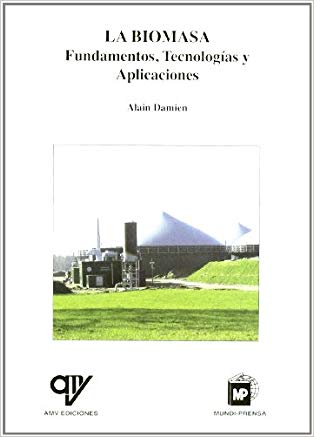Titanio modificado con lantánidos y plata (Juan Carlos Arévalo Pérez/José Gilberto Torres Torres)

HISTORIA DEL VIDRIO (GARCÍA HERAS MANUEL)

Reglamento de almacenamiento de productos químicos (VV. AA.)

LÍMITES DE EXPOSICIÓN PROFESIONAL PARA AGENTES QUÍMICOS EN ESPAÑA. 2017

ESTUDIO DE SISTEMAS DE LIMPIEZA EN MEMBRANAS DE ÓSMOSIS INVERSA

ZEOLITE CATALYSIS (MARTIN, ANDREAS)
 The term zeolite is based on Greek words for ?to boil? and ?stone? and it is already known since more than 250 years. At that time, the Swedish mineralogist A.F. Cronstedt (1722-1765) observed the formation of large amount of steam when heating the material Stilbite pointing to his porous character and adsorption capacity. At present, over 200 different zeolite frameworks have been identified. In general, zeolites are crystalline aluminosilicates with defined micropore structure. Within zeolites, a good number of elements can be isomorphously incorporated and much more elements or their oxides can be hosted by zeolites. Besides their big variety in size of pore mouths, channels, crossings etc. leading also to their designation as molecular sieves and uses in membrane applications, zeolites reveal Br?nsted and Lewis acidic properties that can be varied in wide limits as well. Thus, they deserve the name ?solid acids?. Zeolites have an immense importance in diverse industrial applications as catalysts and adsorbents, for example in refinery industry, chemical industry, detergent sector or for solar thermal col
The term zeolite is based on Greek words for ?to boil? and ?stone? and it is already known since more than 250 years. At that time, the Swedish mineralogist A.F. Cronstedt (1722-1765) observed the formation of large amount of steam when heating the material Stilbite pointing to his porous character and adsorption capacity. At present, over 200 different zeolite frameworks have been identified. In general, zeolites are crystalline aluminosilicates with defined micropore structure. Within zeolites, a good number of elements can be isomorphously incorporated and much more elements or their oxides can be hosted by zeolites. Besides their big variety in size of pore mouths, channels, crossings etc. leading also to their designation as molecular sieves and uses in membrane applications, zeolites reveal Br?nsted and Lewis acidic properties that can be varied in wide limits as well. Thus, they deserve the name ?solid acids?. Zeolites have an immense importance in diverse industrial applications as catalysts and adsorbents, for example in refinery industry, chemical industry, detergent sector or for solar thermal colEVOLUCIÓN DE LA INDUSTRIA QUÍMICA. TRANSICIÓN HACIA LAS BIORREFINERÍAS (BILBAO DUÑABEITIA, RAFAEL)
 La potenciación de la sostenibilidad de la industria química hace que en muchos países se plantee un cambio en la forma de obtener diversos productos químicos y energía. En este contexto se encuadra el concepto de biorrefinería, que se basa en sustituir paulatinamente las actuales materias primas fósiles y finitas por materias primas renovables, como la biomasa, y en el aprovechamiento y valorización de subproductos y residuos.
La potenciación de la sostenibilidad de la industria química hace que en muchos países se plantee un cambio en la forma de obtener diversos productos químicos y energía. En este contexto se encuadra el concepto de biorrefinería, que se basa en sustituir paulatinamente las actuales materias primas fósiles y finitas por materias primas renovables, como la biomasa, y en el aprovechamiento y valorización de subproductos y residuos.RESUMEN Y TEST RESUELTOS DEL REGLAMENTO DE ALMACENAMIENTO DE PRODUCTOS QUÍMICOS . R. D. 379/2001 (TALAVERA MARTÍN, LUIS FERNANDO)

ESTUDIO DE LA OXIDACIÓN PARCIAL DE METANO SOBRE CATALIZADORES DE WO3 SOPORTADOS. (ROMERO, LUIS R.)

THE RARE EARTH TRIFLUORIDES. T.2. INTRODUCTION TO MATERIALS SCIENCE OF MULTICOMPONENT METAL FLUORIDE CRYSTALS (SOBOLEV, BORIS PAVLOVICH)

CESPA, MANIPULACIÓN DE PRODUCTOS QUÍMICOS

LIBRO: LA BIOMASA: FUNDAMENTOS, TECNOLOGÍAS Y APLICACIONES. ISBN: 9788496709171 – BIOMASA Y RENOVABLES (DAMIEN, ALAIN)

FICHAS DE INTERVENCIÓN ANTE ACCIDENTES CON MATERIAS PELIGROSAS (PAÍS VASCO. DIRECCIÓN DE ATENC)

INTRODUCCIÓN A LA QUÍMICA INDUSTRIAL (TISCAREÑO LECHUGA, FERNANDO / VIAN ORTUÑO, ÁNGEL)
 Este libro es la expresión sistemática de cómo se aprovechan hoy las materias primas esenciales -aire, agua, litosfera, etc.- dejando abierta la inquietud del estudioso para poder intuir las líneas por las que podrían discurrir los sistemas productivos químicos al variar las necesidades de los mercados y/o las posibilidades ofrecidas por la ciencia y la tecnología.Esta edición ha contado con la aportación de 14 prestigiosos profesores universitarios.
Este libro es la expresión sistemática de cómo se aprovechan hoy las materias primas esenciales -aire, agua, litosfera, etc.- dejando abierta la inquietud del estudioso para poder intuir las líneas por las que podrían discurrir los sistemas productivos químicos al variar las necesidades de los mercados y/o las posibilidades ofrecidas por la ciencia y la tecnología.Esta edición ha contado con la aportación de 14 prestigiosos profesores universitarios.FORMULARIO DE LICORERÍA (DOBISLAW, ERNST)
 El tema cental de esta obra es una muy detallada descripción de la colección de fórmulas, capaz de dar satisfacción a los más exigentes. Se ha tratado con especial detalle el estudio de las drogas, de acuerdo con la importancia práctica que poseen.
El tema cental de esta obra es una muy detallada descripción de la colección de fórmulas, capaz de dar satisfacción a los más exigentes. Se ha tratado con especial detalle el estudio de las drogas, de acuerdo con la importancia práctica que poseen.